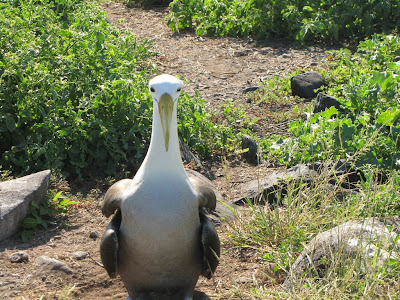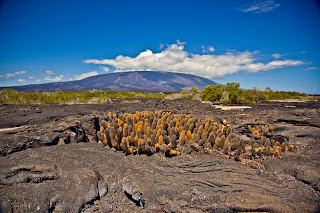This is a most exciting time of year for Punta Suarez on Espanola
Island. Though there is never a bad time to visit this island, in springtime, visitors get to see all of the Waved Albatross in the world settle here, engage in their ritual dance, mate, and care for
their babies. I've written
about Punta Suarez before. See that post,
here. And, I'm sure you'll hear more about it
again, because it differs from season to season. Sometimes the blue
footed boobies' nursery is the centerpiece. Now though, in springtime,
it's the amazing, wondrous Waved Albatross.

Here's one now - greeting us head on - completely unafraid - posing for the camera.
 |
| Mating Area |
Mariners have long associated albatross with good luck
because when a sailor sees an albatross, land is near.
If you visit Punta Suarez on Espanola Island from
the beginning of spring through November, and see these dramatic and unique
birds, you’ll believe that they bring good luck too.
Your landing by panga on Espanola will barely
hint at the wonder you are about to experience.
The initial path is rocky and dry, typical of the volcanic formation of
the Galapagos Islands.
Soon though it
opens up to a gorgeous view of the Pacific Ocean, pounding seas, dramatic blow
holes, and, most special of all, the world’s only Waved Albatross mating area.





